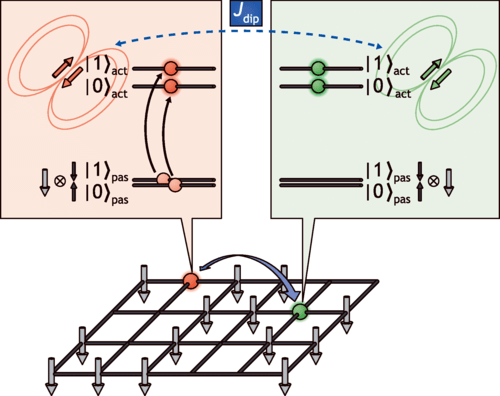
Swiss researchers at the Paul Scherrer Institute (PSI) have put forward a detailed plan of how faster and better defined qubits can be created.
The central elements are magnetic atoms from the class of so-called rare-earth metals, which would be selectively implanted into the crystal lattice of a material. Each of these atoms represents one qubit.
The researchers have demonstrated how these qubits can be activated, entangled, used as memory bits, and read out.
The authors describe how logical bits and basic computer operations on them can be realized in a magnetic solid: qubits would reside on individual atoms from the class of rare-earth elements, built into the crystal lattice of a host material. On the basis of quantum physics, the authors calculate that the nuclear spin of the rare-earth atoms would be suitable for use as an information carrier, that is, a qubit. They further propose that targeted laser pulses could momentarily transfer the information to the atom’s electrons and thus activate the qubits, whereby their information becomes visible to surrounding atoms.
The researchers demonstrate how these qubits can be used to produce logic gates, most notably the ‘controlled NOT gate’ (CNOT gate).
Ultimately, what the PSI researchers have discovered is a way of making this type of quantum computer not only at least ten times as fast as comparable systems, but also less error-prone by the same factor. (Phys.org)
Their design concept and supporting calculations have been published in PRX Quantum.
The post New blueprint for more stable quantum computers appeared first on Swiss Quantum Hub.


